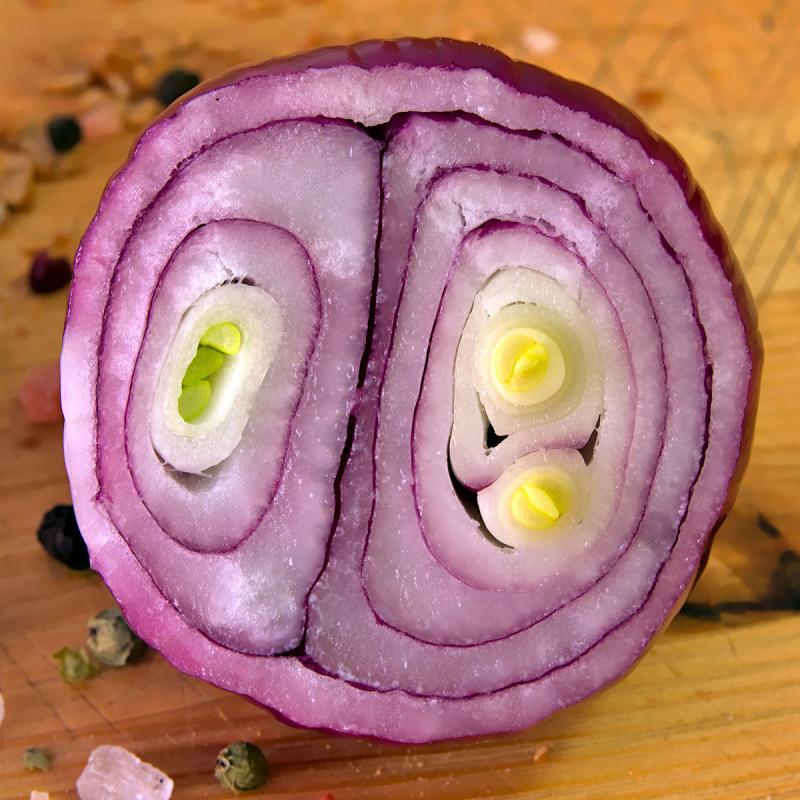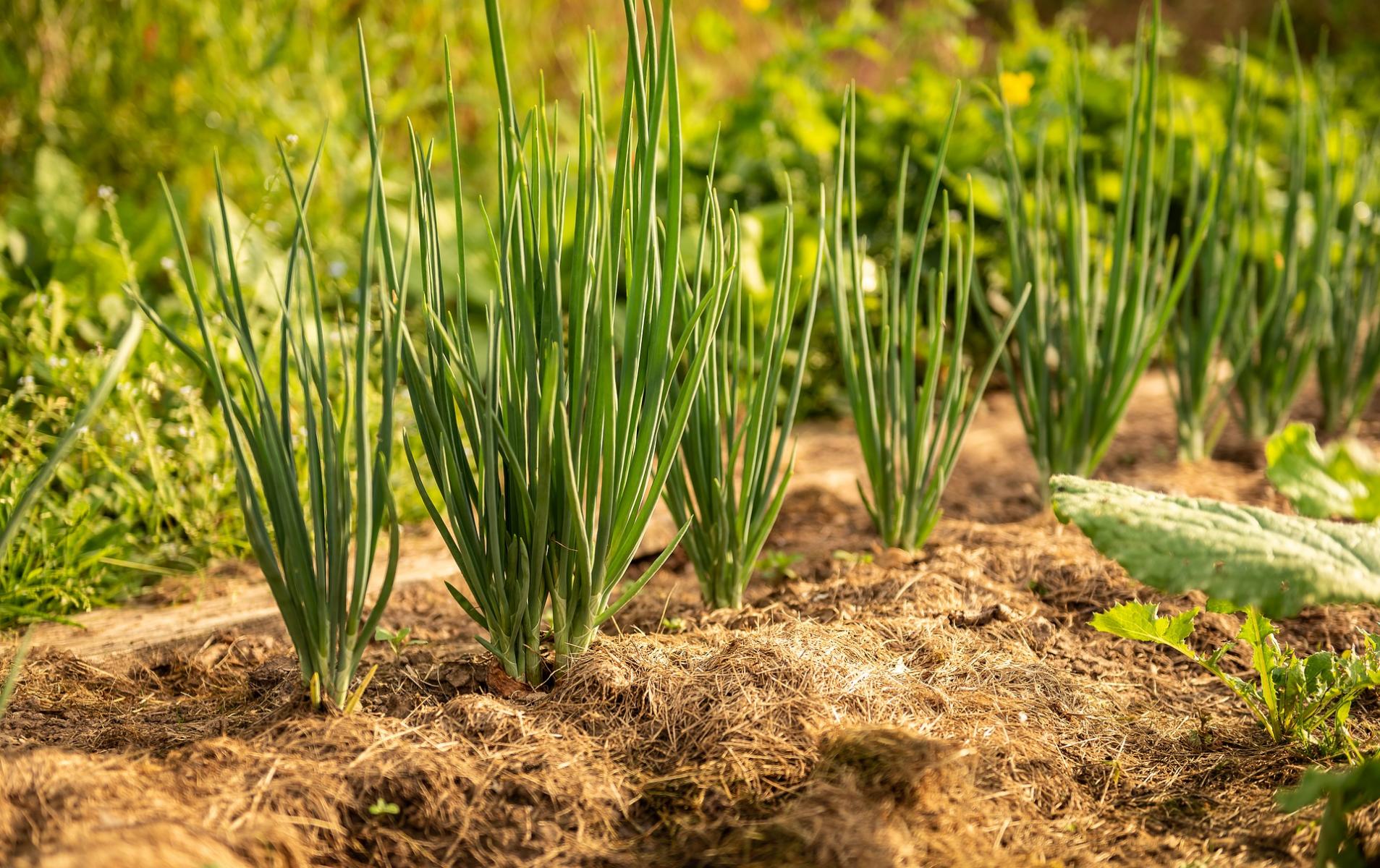
Onions are a cooking staple and not difficult to grow in the home garden. So why not grow your own this summer? But which to choose? There are many options in the garden catalogs.
Day Length Requirements
The first option to consider is whether to choose short day, day neutral or long day onions. Onion cultivars are grouped according to the number of daylight hours or day length required to trigger the beginning of bulb development.
- Short day – 11 to 12 hours daylight
- Intermediate or day neutral – 12 to 14 hours daylight
- Long day – 14 or more hours daylight
Short day onions are often used in the southern U.S. for winter onion production. It seems like they would be a great choice for growing large bulbs in Nebraska gardens, too - the sooner bulb development begins the better, right? But when grown in northern regions like ours, short day onions start bulb development too soon, resulting in disappointingly small bulbs.
This is because they do not have enough time for leaf growth before bulb development starts. Leaf growth is critical, since each leaf translates into one layer in the bulb. Gardeners want to have as many leaves as possible before bulb development starts.
Long day onions are the best option for our area. Plants have plenty of time for spring and early summer leaf growth to occur before bulb development is triggered by longer days. Plant as early as possible, ideally starting with transplants, getting them in the ground as soon as garden soil is dry enough to work and daytime temperatures reach 50°F.
Sets, Seeds or Transplants?
 Planting onions from small bulbs or "sets" is not the best way to grow large onions for storage. Plants grown from sets often begin blooming in mid-summer and stubbornly refuse to stop. Once that happens, bulbs don't increase much in size.
Planting onions from small bulbs or "sets" is not the best way to grow large onions for storage. Plants grown from sets often begin blooming in mid-summer and stubbornly refuse to stop. Once that happens, bulbs don't increase much in size.
This occurs because onions are biennials. They grow foliage and a bulb in the first season, then bloom and set seed in their second growing season. Growing the sets counts as one growing season, although it is a short one, and the plants are primed to reproduce by setting flowers after growth resumes in your garden. This makes onion sets a great way to grow green onions, but not the best way to grow large onions for storage.
Growing your onions from seed or transplants is a better option since they are not biologically primed to bloom the first year of growth. Growing your own transplants from seed is possible, but time consuming so transplants are the easiest option and many garden catalogs now sell bundles of the small grass-like transplants.
Onion Transplants in the Garden
Get your transplants into the garden as soon as soil is dry enough to work thoroughly and daytime temperatures reach 50°F. Onion transplants will tolerate light frosts. Create a smooth workable soil surface before planting. Onions grow best in well-drained soil, 6.5 pH, with a high level of organic matter. Raised beds, 4-6 inches high, work well to provide good soil drainage if the native soil is heavy.
Space plants 4-inches apart in wide row planting. When using “wide” rows, plants are not placed single file in one long row but are spaced throughout a row ranging from 6 to 36 inches across. Use a row width that is convenient for you to reach from both sides, to make harvesting and weed control easier. Place the transplants 1 to 1.5-inches deep in the soil.
The shape of the onion bulb is determined both by cultivar selection and the growing depth of the basal plate, a section of compacted stem at the base of the onion from which the leaves and roots grow. If the basal plate is near the surface of the soil, as often occurs when onions are direct seeded, the onion bulbs will be a flat disc shape. Transplants set slightly deeper in the soil causing the bulbs to be more globe-shaped.
Onions also need plenty of sunlight and regular watering. The installation of drip irrigation the length of the rows makes watering easier and more uniform. Light mulch will help decrease the number of weeds, as well as conserve soil moisture. Keep onions evenly moist, but not waterlogged, throughout the growing season, especially after bulbs begin enlarging. Even moisture is very important; moisture stress can cause double and/or split bulbs.
Due to their shallow root systems, onions compete poorly with weeds. Shallow cultivation is necessary; do not hill up soil on onions, as this can encourage stem rot.
Images: from Pixabay.com
- Feature image - Split onions may develop due to moisture stress while bulbs are growing.
- Mulch, like these grass clippings, help conserve soil moisture while plants are growing.
- Start plants as early in spring as possible for good leaf development and bulb size.